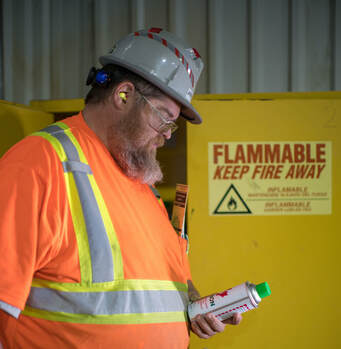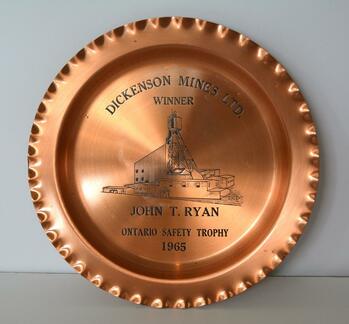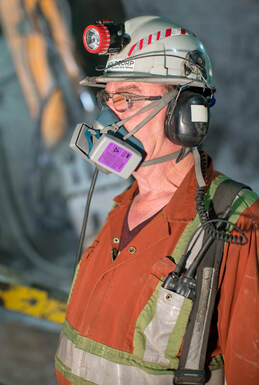Mining has the reputation of being a highly dangerous career. However, over the last 50-60 years, mining and exploration companies have set standards, increased education and improved equipment to create a safer working environment. Workers and unions have actively sought change and were involved in the improvement of safety standards within the mining community. Today, mining and exploration companies have made safety and maintaining a safe working environment a priority.
|
|
Safety Standards and Regulations Ontario has had workplace safety legislation in place since 1884, but it was not until the 1960's that changes to provincial workplace safety standards were made. The Industrial Safety Act was passed in 1964, followed by Ontario’s Occupational Health and Safety Act (OHSA) in 1978. The introduction of the OHSA was a result of workers criticizing and striking over the lack of safety standards and regulations. The OHSA cemented three fundamental rights for workers – the right to know, the right to participate and the right to refuse. While mines often employed doctors to look after employees general health, there was not always the preventative study of occupational diseases that there is today. Contemporary mining companies use industrial or occupational hygiene (the science of protecting and enhancing workplace health and safety) to evaluate, study and prevent occupational diseases. Industrial hygienists use a variety of equipment to test and monitor worker’s conditions throughout the mine. Industrial hygienists analyze the data collected and come up with how to prevent occupational health issues from arising or minimize their development. Standard equipment includes fit test machines, noise dosimeters, heat stress meters and air sampling pumps. Each year government bodies like Workplace Safety North give out workplace excellence awards recognizing companies for their commitment to having a safe environment. |
|
Training
For much of Red Lake’s early mining history, very few underground miners had formal training. A miner’s education was hands-on, on the job training. New miners were partnered with and trained by veteran miners. The veteran miners would decide when their trainees were ready to work on their own. Since many of the new miners did not speak English, accidents were quite common. |
Training
|
|
Eventually, technology and equipment changed and formal training and certification became commonplace in the mining industry. Mining companies brought in trainers to educate employees on new equipment or to get new certifications. If there was a new technique or theory, the mines would send employees to conferences or school. Many new miners now have post-secondary education in mining techniques or have attended stope school.
Today, all mine and exploration employees have safety training. Active mines like Goldcorp also run four safety (stenching) drills a year to ensure all employees know what to do in the event of an emergency. Underground mining projects also maintain mine rescue teams who act during emergencies. |
Click on a topic below to learn more about mine safety features and health issues that affect miners.
Timeline
Historic Red Lake Mining
Red Lake Geology
The Red Lake Gold Rushes
From Hudson to Headframe
Community Development
Commerce
Education
Medicine
Recreation
Mining Practices
Going Underground
Equipment
Extraction
Milling
The Mill Process
Safety
Refuge Station
Mine Rescue
Health Issues
Jobs
Contemporary Red Lake Mining
Environment
Labour
Innovation
Exploration
Indigenous Rights
Gold Prices
Mining and Exploration Companies
Goldcorp Inc.
Rubicon Minerals
Premier Gold Mines
Pure Gold Mining
Rimini Exploration & Consulting
Other Mining & Exploration Companies
Glossary



